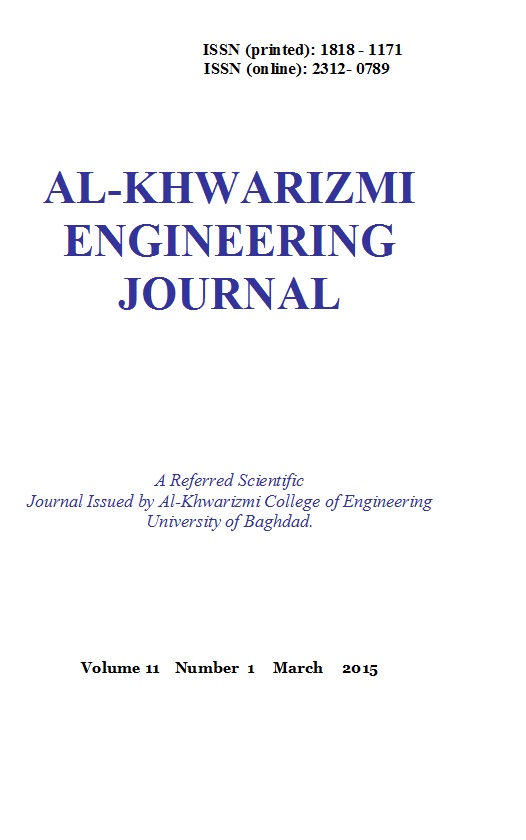Formation of Compressive Residual Stress by Face Milling Steel AISI 1045
Keywords:
Face milling, Cutting parameters, Steel AISI 1045, Residual stresses, XRD; DOE, RSM, Modeling and Numerical optimization.Abstract
Abstract
Machining residual stresses correlate very closely with the cutting parameters and the tool geometries. This research work aims to investigate the effect of cutting speed, feed rate and depth of cut on the surface residual stress of steel AISI 1045 after face milling operation. After each milling test, the residual stress on the surface of the workpiece was measured by using X-ray diffraction technique. Design of Experiment (DOE) software was employed using the response surface methodology (RSM) technique with a central composite rotatable design to build a mathematical model to determine the relationship between the input variables and the response. The results showed that both the feed rate and the cutting speed are the significant factors controlling the surface residual stress, while the depth of cut had no influence. A quadratic empirical model was developed with a 95% confidence level, and a good agreement was found between the experimental and predicted results. A numerical optimization was then conducted through DOE program to find the optimum surface residual stress at the optimum cutting parameters, depending on the maximum desirability obtained. The optimum compressive surface residual stress (-224.361 MPa) was found at cutting speed of 69.2 m/min, feed rate of 0.4 m/min and depth of cut of 0.4 mm.
Keywords: Face milling, Cutting parameters, Steel AISI 1045, Residual stresses, XRD; DOE, RSM, Modeling and Numerical optimization.
Downloads
Published
Issue
Section
License
Copyright: Open Access authors retain the copyrights of their papers, and all open access articles are distributed under the terms of the Creative Commons Attribution License, which permits unrestricted use, distribution, and reproduction in any medium, provided that the original work is properly cited. The use of general descriptive names, trade names, trademarks, and so forth in this publication, even if not specifically identified, does not imply that these names are not protected by the relevant laws and regulations. While the advice and information in this journal are believed to be true and accurate on the date of its going to press, neither the authors, the editors, nor the publisher can accept any legal responsibility for any errors or omissions that may be made. The publisher makes no warranty, express or implied, with respect to the material contained herein.












